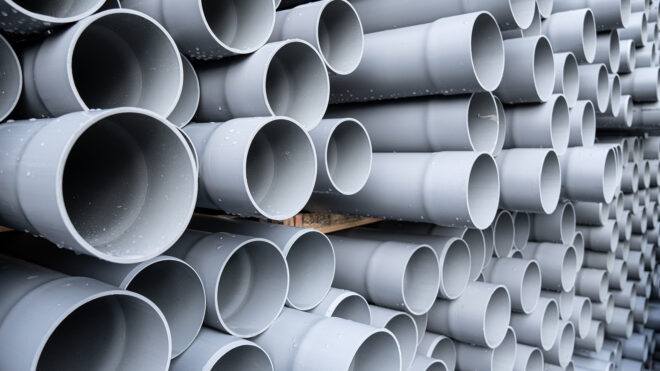Shaping the Future: Innovations in Plastic Extrusion Techniques
Plastic extrusion is a manufacturing process where raw plastic material is melted and formed into a continuous shape or profile. This technique is widely used to produce various plastic components for multiple applications. As technology advances, new materials and innovative processes are revolutionizing this field, offering enhanced product design and greater functionality.
SeaGate Plastics has been a trusted partner in the plastic extrusion industry for over thirty years. We specialize in delivering high-quality, custom plastic extrusions and fabricated components tailored to meet our clients' diverse needs.

Overview of the Plastic Extrusion Process
Plastic extrusion involves several key steps. Here is a detailed breakdown of each stage:
Preparation
Plastic pellets or granules are fed into a hopper for heating and melting. The type of plastic used depends on the desired properties of the final product.
Extrusion
The molten plastic is forced through a specialized tool called a die. The die shapes the plastic into a continuous profile that matches its cross-sectional design.
Cooling and sizing
The newly formed plastic profile is cooled using air, water baths, or both to maintain its shape. Sizing tools may be used to ensure the final dimensions meet specifications.
Cutting and finishing
Once cooled and solidified, the extruded plastic is cut into desired lengths or wound into spools. Additional finishing processes such as printing, punching holes, or adding surface textures may also be performed.
Quality control
Throughout the extrusion process, quality control measures are taken for parameters like temperature, pressure, and dimensions. This ensures that the extruded products meet the required strength, durability, and appearance.
Latest Materials in Plastic Extrusion
New materials have emerged in recent years, enhancing both the performance and sustainability of plastic components:
Materials such as polyether ether ketone (PEEK) and polyphenylene sulfide (PPS) are increasingly being used in extrusion. They offer excellent mechanical properties and resistance to high temperatures, making them suitable for demanding environments where durability is critical, like aerospace and automotive manufacturing.
Innovative Extrusion Processes
Here are some notable advancements in extrusion techniques:
Co-Extrusion
This process involves extruding multiple layers of materials simultaneously through a single die to create a composite structure. Co-extrusion allows for precise control over layer thicknesses and material properties. This allows for the production of components with enhanced functionalities such as barrier properties, adhesion characteristics, or aesthetic features.
3D Printing Integration
Extrusion-based 3D printing, such as fused deposition modeling (FDM), is now used to create prototypes and end-use parts in industries like aerospace and medical device manufacturing. This hybrid approach enables the layer-by-layer fabrication of complex geometries using a wide range of thermoplastic materials, offering flexibility in prototyping and small-scale production.
Foamed Extrusion
Foamed extrusion involves injecting gas — typically nitrogen or carbon dioxide — into the molten polymer to create a cellular structure. This process reduces density, enhances thermal and acoustic insulation properties, and improves impact resistance.
Microcellular Extrusion
Like foamed extrusion, microcellular extrusion creates a fine cellular structure within the polymer matrix. However, the cells formed are much smaller — typically in the micrometer range — which enhances properties like stiffness, toughness, and dimensional stability. This process is utilized in industries requiring lightweight materials with high performance, such as aerospace and electronics.
Profile Extrusion With In-Line Processing
Advanced profile extrusion techniques integrate in-line processing steps within the extrusion line to enhance product functionality and reduce manufacturing steps. In-line processes may include coiling, cutting, punching, welding, embossing, or applying coatings directly after extrusion. This reduces production time, minimizes material handling, and improves product consistency and quality.
Impact on Product Design and Functionality
The ongoing advancements in plastic extrusion technology are revolutionizing the industry, providing numerous benefits, including:
The evolution of plastic extrusion techniques has significantly enhanced the ability to customize products according to specific design requirements and functional needs. Manufacturers can now precisely tailor material properties, shapes, and sizes, offering unparalleled flexibility in product development. This is particularly advantageous in industries such as automotive, where complex geometries and lightweight designs are critical for improving performance and fuel efficiency.
Key Industry Applications
Plastic extrusion finds extensive applications across various sectors, including:
- Packaging: Plastic extrusion is extensively used to produce films, sheets, and containers, including food packaging, shrink wrap, bags, and bottles. This material is also applied into returnable packaging where dunnage, handles, corners, and frames for totes are produced.
- Construction: Extruded plastic materials are used in construction for profiles such as window frames, piping systems (like PVC pipes), weather stripping, decking, and fencing.
- Automotive: Plastic extrusion is used to manufacture parts such as trim moldings, weather seals, door panels, and piping systems.
- Electrical: Electrical conduits, cable insulation, wire coatings, and connectors are often produced using plastic extrusion due to the insulation properties and durability of plastic materials.
- Furniture: Plastic extrusion contributes to the production of components such as edge banding, profiles for modular furniture systems, and decorative trims.
- Consumer goods: Many everyday consumer goods use plastic extrusion techniques for components like pipes, tubes, profiles for appliances, and toys.
- Medical: Plastic extrusion is used to manufacture tubing for intravenous (IV) lines, catheters, and various medical devices due to its biocompatibility and sterilizability.
- Industrial: Various industrial applications benefit from plastic extrusion for components such as conveyor belts, gaskets, seals, and protective covers.
SeaGate Plastics: Your #1 Source for Custom Plastic Extrusion Solutions
Since 1987, SeaGate Plastics has been providing top-tier custom solutions in plastic extrusion and fabricated plastic components. Our ISO 9001:2015 certified Quality System ensures the highest quality and cost-effective plastic parts, delivered on a timeline that meets your business needs. We also specialize in plastic injection molding, in-house project and tool design, 3D printing, screen printing, labeling, and packaging. Our integrated capabilities ensure that we can meet all your plastic manufacturing needs efficiently and with the highest standards of craftsmanship.
Contact us today, and let us help you bring your plastic product ideas to reality! You can also request a quote to get started.
